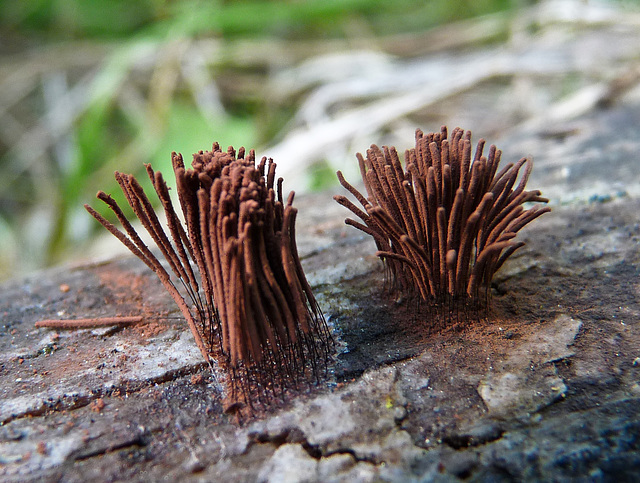Orange on orange / Castilleja miniata
So that's where the mushrooms go
Hooker's Thistle
In mushroom paradise
Bracted Lousewort
Two little fun guys
Northern Checkerspot
Coprinus
Viceroy
Out of this world
Wood Frog
Tiny and opaque
Fireweed
Twice-Stabbed Stinkbugs
Groovy
Daisy
Intense
From a Forget-me-not meadow
About to face the world
On a forest stump
Find the sheep
Summer colour
Cladonia bellidiflora, 'Toy Soldiers'
Enjoying a swim
Gaillardia on green
Gunnery Pass
Parry's Townsendia
Pink and white
Amongst the forest greens
Love me, love my warts
Sticky Asphodel with sparkles - thinking of you, M…
Bow Valley Provincial Park
Bracted Honeysuckle
Beauty and beast
Sharp little eyes
A mixture of Lichens
Green
Aspen Bolete mushroom
Orange-crowned Warbler
To brighten the day
Oh, so cute
Green Grasshopper nymph
Starburst
White Mountain-avens
Columbian Ground Squirrel
Location
See also...
Keywords
Authorizations, license
-
Visible by: Everyone -
All rights reserved
-
194 visits
Slime Mold - Stemonitis axifera


Today, a handful of us went to do a repeat botanizing walk on a wonderful, forested property near Millarville, south west of Calgary. We saw all sorts of neat fungi and slime molds, as well as a good variety of wildflowers and birds. This tiny one, Stemonitis axifera, growing on a fallen log, was strange and quite beautiful when zoomed in on. Reminded me of brown "Sparklers". I haven't checked it out in large size, but it should be easier to see the details on the right, sharper clump. Thanks, Doug, for finding all sorts of neat things today - between you, you and David did an amazing job! Many thanks, too, to Mr. Handfield who so kindly allowed us to explore his property and accompanied us on our exploration. I'm sure we all learned some new things : )
"Slime mold is a broad term describing fungi-like organisms that use spores to reproduce. They were formerly classified as fungi, but are no longer considered part of this group.
Their common name refers to part of some of these organism's lifecycles where they can appear gelatinous (hence the name slime). However, this feature is mostly seen with the myxomycetes, which are the only macroscopic slime molds.
Slime molds have been found all over the world and feed on microorganisms that live in any type of dead plant material. For this reason, these organisms are usually found in soil, lawns, and on the forest floor, commonly on deciduous logs. In urban areas, they are found on mulch or even in the leaf mold in gutters. One of the most commonly encountered slime molds, both in nature in forests in the temperate zones of the earth as well as in classrooms and laboratories is the yellow Physarum polycephalum." From Wikipedia.
"Slime mold is a broad term describing fungi-like organisms that use spores to reproduce. They were formerly classified as fungi, but are no longer considered part of this group.
Their common name refers to part of some of these organism's lifecycles where they can appear gelatinous (hence the name slime). However, this feature is mostly seen with the myxomycetes, which are the only macroscopic slime molds.
Slime molds have been found all over the world and feed on microorganisms that live in any type of dead plant material. For this reason, these organisms are usually found in soil, lawns, and on the forest floor, commonly on deciduous logs. In urban areas, they are found on mulch or even in the leaf mold in gutters. One of the most commonly encountered slime molds, both in nature in forests in the temperate zones of the earth as well as in classrooms and laboratories is the yellow Physarum polycephalum." From Wikipedia.
- Keyboard shortcuts:
Jump to top
RSS feed- Latest comments - Subscribe to the comment feeds of this photo
- ipernity © 2007-2024
- Help & Contact
|
Club news
|
About ipernity
|
History |
ipernity Club & Prices |
Guide of good conduct
Donate | Group guidelines | Privacy policy | Terms of use | Statutes | In memoria -
Facebook
Twitter

Sign-in to write a comment.